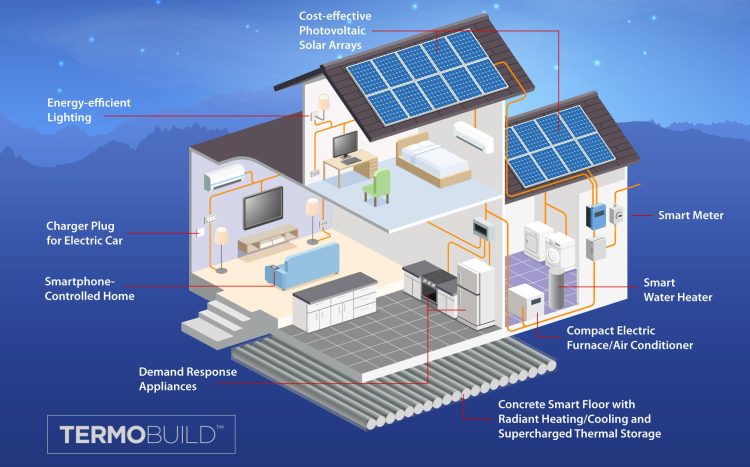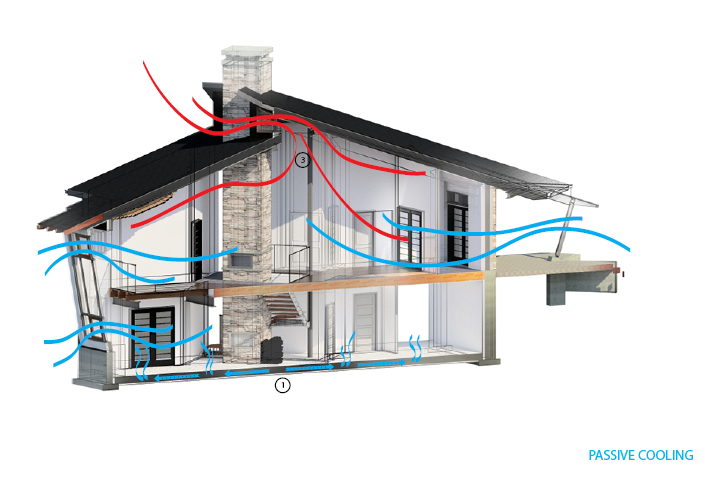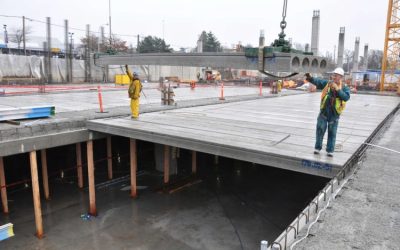Supercharging Passive Design and Free Heating & Cooling for Enhanced Indoor Environments
Passive design and the utilization of free heating and cooling represent a compelling proposition for building efficiency and sustainability in both commercial and residential applications. These concepts have long been recognized for their potential to reduce energy consumption and enhance comfort.
However, a solution that not only capitalizes on these advantages but also takes them to enhance levels of performance. By placing ventilation at the core of the system, this innovative approach seamlessly integrates thermal energy storage, leading to optimal indoor environments and substantial cost savings.
Ventilation as the Heart of Efficiency
Ventilation is often an underestimated aspect of building design. Yet, it has the power to transform indoor environments by continuously infusing fresh air, purifying spaces, and ensuring occupant well-being. The integration of passive design principles accentuates these benefits, establishing a symbiotic relationship between energy efficiency and indoor air quality.
Thermal Energy Storage: Redefining Efficiency
A cornerstone of this revolutionary solution is thermal energy storage, a concept that reimagines the way we manage heating and cooling in buildings. Traditional methods necessitate bulky equipment and energy-intensive processes. However, the incorporation of thermal energy storage technology significantly reduces or even eliminates the need for such apparatus.
Concrete Floors as Smart Asset
Concrete floors, often overlooked as mere building components, play a pivotal role in this innovative approach. By integrating hollow-core floors as radiant heating/cooling panels and energy storage batteries, a dynamic shift occurs. Unlike conventional systems with moving parts that require frequent maintenance, concrete floors remain steadfastly efficient with minimal upkeep demands.
This not only translates to capital savings on equipment but also substantial reductions in long-term operating and maintenance costs.

Advantages
- Enhanced Indoor Air Quality: The infusion of fresh air through the ventilation system elevates the indoor environment, promoting occupant health and well-being.
- Optimized Energy Efficiency: Passive design principles and thermal energy storage work in harmony, reducing the reliance on energy-intensive heating and cooling systems.
- Space and Aesthetic Benefits: The elimination of bulky equipment creates uncluttered spaces and architectural freedom, enhancing the visual appeal of the building.
- Low Maintenance: Concrete floors as integrated panels require minimal upkeep, leading to remarkable cost savings over the building’s lifecycle.
- Sustainable Footprint: By reducing energy consumption, this approach significantly lowers the building’s carbon footprint, contributing to a greener future.
The marriage of passive design, free heating/cooling, and innovative thermal energy storage represents a transformative step in building efficiency. The revolutionary integration of concrete floors as both radiant panels and energy storage units brings tangible benefits that extend beyond energy savings.
Fresh air becomes not just a means of ventilation but a vehicle for elevating indoor environments, ensuring occupants’ well-being, and fostering sustainability.
As we venture towards a more environmentally conscious future, solutions like these underscore the potential for technology to shape the world we inhabit.






